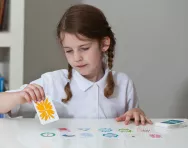Important update from TheSchoolRun
For the past 13 years, TheSchoolRun has been run by a small team of mums working from home, dedicated to providing quality educational resources to primary school parents. Unfortunately, rising supplier costs and falling revenue have made it impossible for us to continue operating, and we’ve had to make the difficult decision to close. The good news: We’ve arranged for another educational provider to take over many of our resources. These will be hosted on a new portal, where the content will be updated and expanded to support your child’s learning.
What this means for subscribers:
- Your subscription is still active, and for now, you can keep using the website as normal — just log in with your usual details to access all our articles and resources*.
- In a few months, all resources will move to the new portal. You’ll continue to have access there until your subscription ends. We’ll send you full details nearer the time.
- As a thank you for your support, we’ll also be sending you 16 primary school eBooks (worth £108.84) to download and keep.
A few changes to be aware of:
- The Learning Journey weekly email has ended, but your child’s plan will still be updated on your dashboard each Monday. Just log in to see the recommended worksheets.
- The 11+ weekly emails have now ended. We sent you all the remaining emails in the series at the end of March — please check your inbox (and spam folder) if you haven’t seen them. You can also follow the full programme here: 11+ Learning Journey.
If you have any questions, please contact us at [email protected]. Thank you for being part of our journey it’s been a privilege to support your family’s learning.
*If you need to reset your password, it will still work as usual. Please check your spam folder if the reset email doesn’t appear in your inbox.
Children's learning: How hard should you push your child?

Many of us worry over the balance between the hours our children spend learning and those they spend playing. We recognise that most children can benefit from a little push here and there, but the question is how much and how hard?
By pushing children too hard they may begin to feel pressurised, which will affect their enjoyment of learning and their confidence. By putting a child under stress and forcing them to do things they either don't want to do or feel unable to do, you can have a detrimental effect on their attitude towards learning for years to come.
The key lies in trying to balance the effort to improve your child’s academic progress with creating a happy, fun-filled existence for them at home.
Balancing learning with fun
One way to do this is to make learning enjoyable and rewarding, so it feels like play rather than a chore. This extends beyond homework time to finding fun and interesting activities to do that support and extend what's being learnt at school. The point is to work with children’s natural inquisitiveness about the world around them.


Start your child on a learning programme today!
- Weekly English, maths & science worksheets direct to your inbox
- Follows the National Curriculum
- Keeps your child's learning on track
Find out about what your child is currently working on in school - a project, or certain topic area - and then plan relevant activities around it. This could be trips to a local museum, nature walks, anything which can enhance your child's learning experience.
If you aren’t entirely sure what is going on in class, a quick word with teacher is the best way forward.
How to avoid going too far
While quality time and attention from a parent is essential, making sure your child also has enough breathing space is a good idea. Creating a steady routine where kids can have a snack and a rest, or even a chance to let off steam, before embarking on more educational activities will help them to engage better with what they need to learn.
Here are a few tips to help:
- Give children lots of praise and encouragement so they look forward to learning activities. Remember to be specific - show that you understand and appreciate exactly what is good about a child’s work.
- Give your child tasks they can cope with – if they succeed, they’re much more likely to want to attempt things that are more difficult.
- Keep up to date with the guidance your child’s teacher sends home about homework that needs to be done and what is expected in terms of achievement.
- Create a routine so that your child develops an expectation that at a certain point after they come home from school they will need to concentrate on homework.
- Even if it’s just the kitchen table, make sure that there is a defined workspace and quiet time, so that your child can focus without distractions.
- Work with your child’s strengths – it’s the quickest way to get them motivated and the best route through which to tackle subjects they might otherwise shy away from.
- Bring topics to life by visiting museums, libraries, and exhibitions. Go to talks and on walks, and seek out relevant resources that take a fun approach to subjects.








